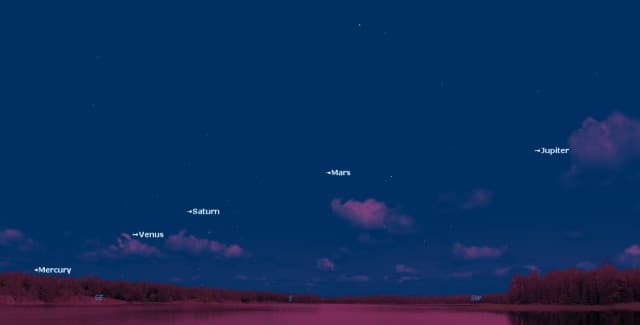First Time In 10 Years 5 Planets Closest To Earth Will Be Visible Simultaneously

Another reason why this is extraordinary is because all five planets will be visible on the same side of the sky. Mercury, which is the closest to the Sun, is rarely visible without a telescope, owing to the bright backlight illumination, but this time, it joins the parade. Mercury will be the last planet to come up the horizon, at about 6.45 a.m. on Wednesday the 20th of January. 6.45 in the morning is already past twilight in most other places, so if you are lucky enough to have low light at that time and cloudless clear sky, and of course if you manage to wake up that early, you will witness this spectacular scene.
But it lasts till the 20th of February, so there is a good chance of getting a glimpse of the parade on at least one day. In fact, Venus will be much easier to spot a little later this month than at the beginning of the occurrence. The order of appearance is Mercury, Venus, Saturn, Mars and Jupiter. Since last October, these 5 planets have been playing hide-and-seek, but mostly in the wee hours of the day, and individually.
This is not an alignment of the planets, but we'll see them as if they are all aligned in a straight line. Starting with Mercury at the southeast end of the sky, the five planets will seem to appear in a diagonal towards the southwestern horizon. There will also be some bright stars in the way, and some of these #-Link-Snipped-# might help you spot and differentiate them. Layman hack: Stars blink. Planets don’t.
Source: #-Link-Snipped-#
